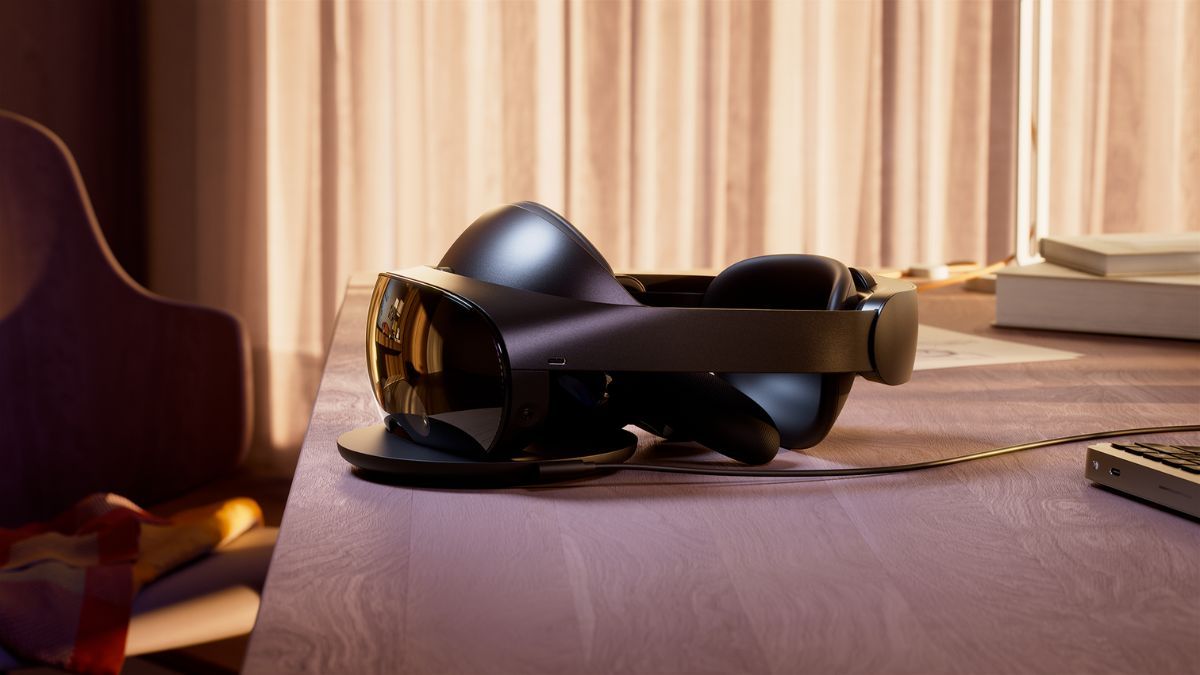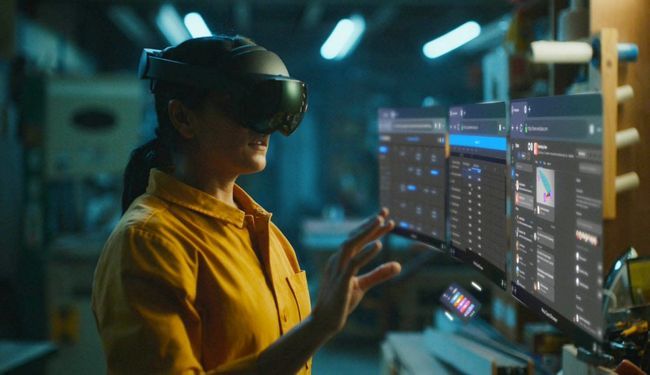Quick Links
The Meta Quest Pro VR headset, codenamed "Project Cambria," was officially revealed on October 11, 2022. It has a $1500 price tag and a long list of technical improvements compared to Quest 2, but does that mean you should buy one?
The Meta Quest Pro Is Not the Quest 3
The most important thing you should know is that the Quest Pro is not a successor to the Quest 2. Instead, it's the first in a high-end parallel line of VR headsets. It is certainly better than the Quest 2 in every way, but at almost four times the asking price, these products aren't in competition for the same customers.
Meta is still developing the Quest 3 at the time of writing, and when it releases, it will almost certainly be at a price closer to the Quest 2 than the Quest Pro. How much of the new technology in the Quest Pro will find its way into the mainstream Quest product line remains to be seen.
The Quest for Meta's Metaverse
In 2021, Facebook changed its name to "Meta". This change was the latest of several moves to invest in mixed- and virtual-reality technologies. Meta has acquired companies such as Oculus, whose technology sits at the leading edge of what Meta hopes to weave into "the metaverse."
A metaverse is essentially a shared, persistent virtual world that ties together many different activities and stakeholders. Online worlds such as Second Life or PlayStation Home are examples of metaverses, but what Meta has in mind is more in line with the fictional worlds of Snow Crash or Ready Player One. It's a fully-embodied virtual world that can blend with the real world using mixed-reality technology.

Ready Player One (4K Ultra HD+Blu-ray)
The film version of Ernest Cline's Ready Player One brings the massive virtual world of the book to vibrant life.
Meta sees this as the future of today's social media. This is a long-term project which could potentially take more than a decade to become a reality.
The Meta Quest headsets are a key part of this plan, providing affordable VR headsets that act as the gateway to the metaverse. The Quest Pro, in particular, offers a glimpse of what a mainstream headset meant to convey the full metaverse experience will be capable of one day.
Key Features of the Quest Pro
The Quest Pro has a long list of improvements and new features compared to the Quest 2, which could take up several articles to explore fully, but the most important ones you need to know about are these:
- Full-color, high-definition, stereoscopic mixed reality thanks to new external tracking cameras.
- Touch controllers with independent tracking, even when the headset can't see them.
- Eye- and facial expression- tracking.
- Significant improvements in overall image sharpness while reducing the optical element depth by 40%, which in turn reduces the size of the headset.
- 50% better sharpness in the peripheral region of the user's view compared to Quest 2.
- Local-dimming, quantum dot display technology for significantly better contrast, color, and brightness.
- Higher-performance system-on-a-chip that can use more power and manage heat better.
Of course, these features don't mean much if the software applications you want to use don't take advantage of them. At the time of writing, it's unclear how many developers will offer higher-end versions of their Quest 2 apps for Pro owners, although since the Quest 3 will naturally also offer higher performance and improved features, this may make it more likely that current Quest 2 apps could get an upgrade.
Who Is the Quest Pro For?
If you're a current Quest 2 owner and aren't bothered by the price of the Pro, then buying one will provide you with a significant drop-in upgrade since the Quest Pro is backward compatible with Quest 2 titles.
However, if you don't plan on participating in the cutting-edge version of the metaverse or using business-friendly features such as fully-VR team meetings and collaboration with eye- and expression-tracking, it's probably not a sensible purchase.
If you're interested in having a better headset for PC VR in particular, there are less expensive PC-specific VR headsets that offer high levels of fidelity (such as the Valve Index). Of course, they do not have the standalone features and other advanced mixed reality technologies in Quest Pro.
If you've been using your Quest or Quest 2 as a PC VR headset and want an upgrade, we strongly suggest waiting to see what the Quest 3 offers or investing in an existing high-end PC VR headset and keep using your existing Quest for standalone VR.
If you're a VR developer looking to make Quest apps, then the Pro seems essential as the platform to work with. If you are all-in on the metaverse (along with your friends and colleagues), then the Pro seems to be the right choice. However, we'd still caution that most people should wait on Quest 3.
Eye-tracking is likely to become an important feature for VR, especially since the PlayStation VR 2 will use this technology for foveated rendering. This means many VR game developers will integrate eye-tracking into the console version of their titles and likely port it over to PC. If the Quest 3 should lack eye-tracking, then the Quest Pro would be the more future-proof option. However, eye-tracking and foveated rendering will take some time to become mainstream on PC, and a new generation of Pro may already be out by the time this feature matters outside of metaverse apps.
The bottom line is that unless you're a VR developer or are an enterprise user with interest in the metaverse or advanced mixed-reality applications, it's probably safe to skip the Quest Pro. At least until exact details about Quest 3 are revealed. The Meta Quest Pro is available for purchase from October 25, 2022.




